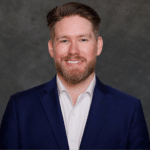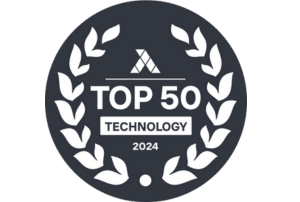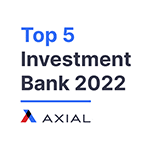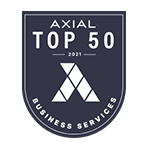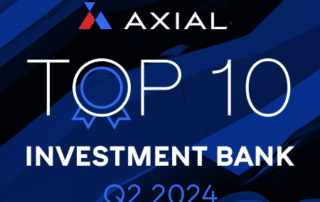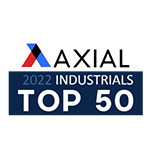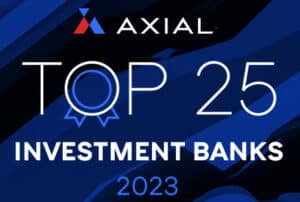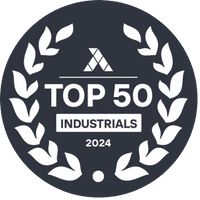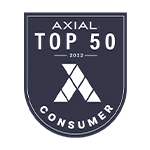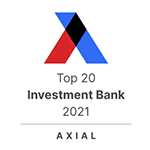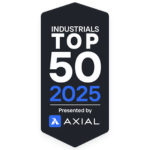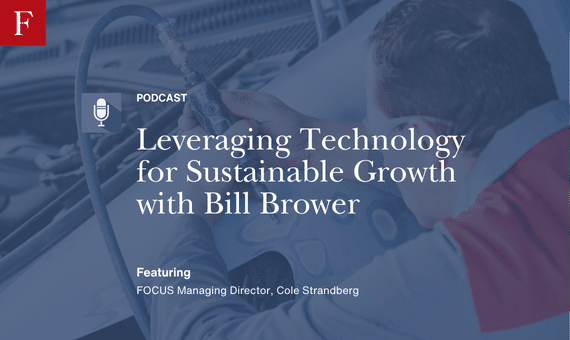
Leveraging Technology for Sustainable Growth with Bill Brower
Joining us for this episode is Bill Brower, an industry leader in vehicle lifecycle management and AI-driven claims automation. Bill has been at the forefront of integrating sustainable estimates, helping insurers and repairers reduce their carbon footprint while improving efficiency. We’ll explore how touchless claims processing, AI, and automation are shaping a more sustainable and profitable repair ecosystem. We’ll also break down how insurers are measuring carbon emissions in the claims process, the role of Scope 3 emissions, and what all of this means for collision repair businesses.
Cole Strandberg: Looking forward to an awesome conversation. You and I have been speaking for a while now and after our very first conversation I said, man, whenever we have a series based on sustainability, I want you there. So looking forward to getting that kicked off here today. And I want to start with a pretty broad question, but when we hear sustainability in collision repair, what should we think of and what exactly does that mean to you?
Bill Brower: Yeah, so it’s a great question and again, great to be with you. Yes, sustainability is so important today. You know, we continue to see and learn about, you know, extreme climate situations and in the insurance industry, that’s huge for the insurance industry. Right. It costs billions of dollars in losses from these major climate issues that take place from time to time. So anything we can do to help is so important. And so for me personally it’s how do I contribute, how do we help improve our environment? And for Celera, this is really a passion and a culture for us. What can we do to help lead the automotive industry? We service the automotive and fleet and really all of the transportation industry across the globe in more than 120 countries. And so we’re looking at how do we contribute here to help in this very important initiative to lower carbon and improve our environment. And so one of the ways that we are doing that on the collision repair side is we’re tracking the carbon that is generated as a result of a collision repair. And not only tracking it, but helping body shops and insurance companies actually lower that carbon so that we can, you know, do our part to help the environment.
Cole Strandberg: Fascinating. And I think that’s one part of a few different parts we’re going to get into today. In our pre show call, you mentioned a few fascinating things like a claims process and how stuff we do there even might tie into sustainability. You’ve also mentioned AI. All of these are things that we’re going to go into. But talk to me real quick about how the claims process might even tie into sustainability.
Bill Brower: Yes, so there’s, there’s several ways. One is when you think about the traditional claims process is, you know, people drive to a body shop or to an insurance company to get an estimate for the damages. Right. Sometimes they have to take a couple of trips, they may see an insurance person, they may see a body shop estimator as well. And so one of the ways to help improve in the lowering of carbon is to leverage AI and allow the customer to simply take pictures of their damaged vehicle. If it’s not a, you know, a major collision, it’s drivable car, let them take pictures that can be converted into an AI estimate that may even avoid the need to go out and have that pre estimate. They may be able to just go ahead and schedule the repair. The things can be done digitally. But then also one of the ways that Celera has, in addition to that, what Celera has done to help lower carbon in the collision repair is we’ve developed a solution called Sustainable Estimatics. And what that is, is that’s a, that’s a way of tracking the amount of carbon generated in a collision repair. So when you think about it. You know, Bill has his car damaged. It’s, it’s estimated for repair at $5,000. What we are able to do now is to how much carbon is generated, maybe that’s 150 kilogram of carbon in that collision repair. And so in doing that, we provide transparency for the insurance company and the body shop so that they can understand some of these factors, not only the metrics that are used in calculating a repair cost, but also how much carbon is generated and look for ways that could actually lower that carbon in the collision repair.
Cole Strandberg: Very cool. And I want to dive into that, of course, here. More later in our conversation. At a high level, what kind of tools exist for shop owners who are sitting here listening to us and saying, I know I need to reduce emissions and improve my sustainability. How do I even start thinking about how to go about doing that?
Bill Brower: Yeah. So in our solution, we’re able to track the carbon in the estimate so we can provide body shops can subscribe to data that allows them to actually see what their carbon scores are based on individual estimates they write or all the estimates that they write. And as well as insurance companies also have that visibility, we’re also adding this to the estimates. So very soon when the estimate’s written, not only will they see the $5,000 repair, they’ll also see the 150 kilogram of carbon, if that’s the situation. But really, the drivers for lowering carbon in a collision repair are some of the best practices in repairing anyway. One is a repair versus replace. So if the fender of my on my car is damaged, the front fender is damaged, there’s three typical ways to take care of that. Correcting that damage. One is to repair it by, you know, repairing the sheet metal and, and refinishing it. That’s the lowest carbon output for that particular type of repair. Another way to correct that would be to replace the fender with a new fender from the carmaker. That’s the highest carbon output because, you know, you have to have the raw materials have to be sourced to create the fender. To build the fender, it has to be manufactured, has to be shipped, so that’s the highest carbon. And then in the middle between the replace and the repair is replacing it with a used part, which is a part that might otherwise be sent to a landfill or crushed. Now, that part can be recycled and reused in the repair. And so when we do our calculations in our tool, we actually, by line, identify how much carbon is generated for each application in the repair. And then we show the summary of how Much carbon is generated. So from a body shop standpoint, it’s being able to have visibility with the data, being able to make decisions not just based on cost, but also based on how much carbon is generated. And that’s how the shops and the insurance industry can actually really contribute to lowering carbon and helping with this issue that is really huge right now in our environment.
Cole Strandberg: Well, you’ve kept it pretty basic for us and I appreciate that because coming into this and in our calls, I realize how much I don’t know about this world. And so I want to take you a little bit more technical, which is getting out of my depth. So bear with me and feel free to tell me if I say anything stupid or wrong. But my understanding is there are different scopes when it comes to carbon emissions and a lot of your focus is on scope 3 emissions, which are apparently, again, often one of the hardest to measure. Talk to me about the different scopes of carbon emissions and what those mean.
Bill Brower: Yes, yes, absolutely. So there are three scopes in tracking carbon. Scope one is what I control. If I own a body shop, the things that I’m doing in my body shop to lower the carbon, that, that’s scope one. Scope two is the energy supply for my shop. So am I, am I in a market where the power is. My power supply is, is coal fired electricity or is it hydroelectric or, or what have you? And so that’s scope two. Scope three is the most challenging one to track. And that is that Scope three includes the mining of the materials to create a part when a part needs to be created or built in order to replace a damaged item. So it’s the raw materials that are collected. It is also the manufacturing process of the part, how much carbon is generated and manufacturing the part. And then it also includes transportation carbon. How do you get that part from the factory or where it’s manufactured to the, to the, to the dealer in the body shop. And so that’s scope three. And so that is the most difficult one to track. And Celera has actually been working on this for over four years to develop the algorithm to make sure that this is a accurate and, you know, very precise way of measuring the carbon for all three scopes. Solera also involved ISO, the international standards organization, to validate that the process and that the scoring mechanism was sound. And so this is an ISO certified solution. And so that’s. So if you think about it, really, the three scopes is what can I control in my shop? What’s the energy supply for my shop? And then the manufacturing process to build and deliver the parts that need to be used in the, in the repair process.
Cole Strandberg: More to think about than one might immediately have come to mind when we talk about sustainability. But very cool that there are ways to track all of those things. You mentioned touchless claims and AI based estimating. How much difference can a business really make in implementing some of these high level best practices? Can we move the needle and if so, what does that look like?
Bill Brower: Yes, absolutely. And we do. At Solaire, we not only provide these solutions, we also help the industry providing by providing thought leadership around the future, the future of claims. We have, we have a message that we provide to the industry called touchless claims. How can a claim be touchless from the standpoint of the customer needing to interact directly with people at the insurance company? Obviously they’re going to interact with the body shops or the body shop for the repair. But in our thought leadership around touchless claims, we talk about how a claim could be handled, start to finish, digitally for a customer who maybe is most interested in using their phone, but more for, you know, clicking a few buttons and digitally interacting rather than talking to people. And so we have created a workflow that allows the insurance company to consider a process for those customers who are interested in a fully digital process to be able to report their claim with their phone, using a text link to create the claim process and then to report the claim, but also to schedule the repair, to create the estimate, as I mentioned earlier, using AI by taking pictures and generating an estimate from the pictures. And so we’ve mapped this process out and we provide this information to the industry as thought leadership. And when you think about sustainability, it really ties in nicely because of all the AI that is available and what we have designed in terms of what we recommend in terms of a touchless process. When that estimate is created, what happens is the, the AI estimate automatically brings in the most sustainable repair methods into the estimate so that it reduces the human error. It allows you to immediately identify the most effective use part if that’s the appropriate way to correct that damage or to repair it and apply the correct amount of time for repairing versus if we’re going to repair versus replace the part. And so, and so as you think about it, what we try to do in our thought leadership is look at where is the future of claims, how can digital transform the way this, this claim is processed? And bringing in AI, bringing in the ability to bring sustainable practices in to that AI estimating. We allow the, the computer through the, through the AI to Actually develop an estimate that is very sustainable in, in the very beginning. And then you have maybe an adjuster review it to do a final review before it’s issued, before payments issued. Man.
Cole Strandberg: I want to dive into the whole repair versus replace conversation because I think that is immediate rubber meets the road kind of things for our listeners before we do to kind of put a bow on this segment of the conversation. If, if you’re a shop owner who’s listening to us right now, they’re driving into work and they’re like, all right, I got to start making some efforts to be more sustainable. What are some of the initial steps that they should be taking today when they get into the office?
Bill Brower: Yeah. Yes, I think it is. Well, first of all, I think the ability to track this and measure it in our. In our capture, what we call capture or capture solution. We have the ability for the shops and the insurance companies to actually see how much carbon is generated in their estimate. So being able to have that measure is really important. And I think also some of the best practices to really improve your carbon output, it is focused on some of those key best practices of making sure that you’re making the correct decision when it comes to repairing versus replace. If it could be repaired properly and back to pre loss condition. It’s about the selection of the parts. Are you actually looking for quality used parts or in Europe we call them green parts, but parts that could be recycled. That’s a really key way to lower the carbon in the repair. And then things like refinishing and when the paint process takes place. Repainting, appropriate blending and sort of limiting the area that needs to be painted is also important in terms of lowering carbon. That also is tracked in our tool. And, and I think those are things that are. That body shops can do day one, that that will really help them to be able to. To make a difference when it comes to lowering carbon. And I think the other thing, and we’re seeing some shops beginning to focus on this now. It’s really a differentiator. You know, when you think about it, when a body shop can share that they have a focus on sustainable repair processes, there’s a large population of consumers that are very concerned about doing their part to lower carbon. And it can actually be a differentiator to help attract more customers into their body shop.
Cole Strandberg: Absolutely. And I think they’re, as we continue our conversation, are going to come up where there’s a lot of business cases for being more sustainable. It’s a good thing to do out of the Goodness of our hearts, but also some real business cases to make that happen as well. So on the repair verse replace side of the conversation, walk us through how we should be approaching that. Is it always better to repair than replace and how much does sustainability need to play into that decision versus repairability?
Bill Brower: Yeah, no, so yes, good question. I would say that, that it always needs to be the right decision to make sure that the, that there’s a high quality repair. Certainly repair is the, the most sustainable option when it can, when a repair can be done appropriately and, and in a quality way. But at the end of the day it’s about putting the car back in pre accident condition. So the, so the, the, the approach is always what is the most appropriate way to repair the vehicle. And, and so yes, one of the ways that we’re also helping to, helping body shops to be able to make those decisions. Another enhancement that’s coming to our solution very soon is in our estimating solution today that we call captur. We today have a decision matrix that, that is available for the estimator where they’re trying to decide do I repair this part, do I replace this part? Today what the tool provides is what is the actual cost to repair versus the actual cost to replace with labor and parts if applicable. What we are implementing in the near future is to also bring in the carbon score into this equation. So the body shop can look at it in terms of cost but also they can look at it in terms of what’s the most effective and sustainable way to do the repair. And so that will also help body shops to make the best, you know, the best decision, most informed decision when they’re deciding how to complete that repair.
Cole Strandberg: Very interesting. Now this is not something we talked about and so I might be barking up the wrong tree here but when we think about carbon emissions and our footprint, how much is up to us to improve? I assume there’s really a base level of emissions to expect and a base level of bad we’re doing from a sustainability perspective. And how much can we improve by implementing some of these processes and procedures? With that in mind.
Bill Brower: It’s pretty significant. And to give you an idea, when we first launched sustainable estimatics, we launched it in Europe about a year and a half ago. And in the very beginning with our first client we, we actually did a test where we, we took a group of shops that are, you know, direct repair type shops, shops that are working with insurance companies very closely that tend to follow some of these best practices of repair versus replace used parts. Blend, refinish. And we compared the carbon, the average carbon output in those shops to shops that are just average shops, but not necessarily a part of the direct repair program. What we discovered was that the shops that are following those more sustainable practices, they were reducing the carbon output on the average estimate by about 43 kilogram per estimate per claim. But that really correlates to loss savings as well. That resulted in about €160 reduction in the cost of repairing the vehicle. So how much can we improve? I think we can improve more than the 43 in that test, 43 kilogram. But as you can see, following these sustainable best practices really allows you not only to lower carbon to lower severity, which is good for consumers, it’s good for insurers, it’s actually good for body shops. Because a lot of times these decisions, if you’re going to repair a panel instead of replace it, the technician tends to make more money in the repair process than in replacing the part. And from talking to body shops, I think oftentimes body shops actually net more as well in the repair. So how much can we improve? I don’t know, but we’re seeing that it is actually making a difference. And it’s also a great way to explain to customers how taking a sustainable approach is good for the environment. It’s actually good all the way around. It’s just a better way to have that conversation with the customer regarding why you might be repairing something or why you might be using a quality use part.
Cole Strandberg: You hit the magic right there to me. And it’s an investment in doing good. And it has an ROI in itself too. You’re making more money, labor is more profitable traditionally than parts replacement. Everybody wins. So no, totally, totally get it. Not to mention leveraging that marketing and being a sustainability partner makes total sense to me. From an OE and insurer standpoint. How have you found these partners who are often responsible for a lot of a body shop’s revenue, reacting to the concept of being sustainable?
Bill Brower: Well, it, it, the industry is actually more focused on this. I think the OEMs are more focused on sustainability today, particularly the OEMs that are, that are based in Europe. We’re finding some OEMs have actually begun to. One in particular, I want name, but one that has actually invested in a used part, a salvage company, in order to make used parts more available in their dealerships and their shops. And so I think there is a heightened sense of importance in focusing on sustainability. And from an OEM standpoint, many times the OEMs while they would want, while they may want to sell the new OEM part, if that’s not the part being used, I think their, their second choice would be an OEM that is, that is used because it was an OEM built part. And so what we see here is particularly, like I said in Europe and in Canada and other parts of the world, we’re seeing that there’s a heightened sense of urgency to focus on sustainability. There are regulations in some countries that require insurance companies to provide reporting on how much carbon is being generated in their processes. And so I think that’s also helped to, you know, promote more sustainability on part of the OEMs. And so, yes, I’m sure there’s still some friction in that space, but we’re seeing more receptivity to taking a sustainable approach. We’re working with some paint manufacturers as they look at how they can lower the carbon in the refinish process. And you know, we’re talking with some OEMs about how we can help them as well in terms of lowering their, their carbon. So it’s, it seems like it’s, it’s getting more and more attention around the world and I think we’ll, we’ll see it only grow in the future.
Cole Strandberg: I, this industry often follows Europe in a lot of ways. And so to see them adopting this focus on sustainability, we’re seeing it now in the US more than even when we first started speaking last year. It feels like there’s some real momentum and oftentimes Europe’s kind of the spark for that. And then we’re, we’re following right there behind continuing down this business case for sustainability. Obviously, efficiency has a big hand in sustainability. It also has a big hand in profitability. It’s good business. Talk to me about how folks should view kind of saving floor space and improving cycle times and identifying vehicles, total loss vehicles early on. How do we view that? What comes into play when trying to keep that in mind?
Bill Brower: Yeah, and again, that’s a good place for AI to come in as well to help both sustainability as well as just the efficiency. So another way that we use AI at Celera is in identifying total losses by using AI pictures, by using pictures and AI. So we have something called intelligent triage, a solution that. So for a body shop, you know, a lot of times cars get quickly moved to the body shop and then it can tie up a lot of space on the lot. You know, maybe they have many cars or scheduling in for repair, but if the car’s totaled, you know, typically what happens is the car will stay in the, in the lot for a little while, comes into the shop, ties up a space, someone starts disassembling and estimating and then they say, oh, this is a total loss. So it’s really been a waste of time. They could have been working on something to repair rather than a total. So we use AI to actually within a few seconds you can walk around the car and take pictures and predict whether that car is totaled or repairable within about 10 seconds. It’s just really, really quickly once you take the pictures. And so AI can help there because then you’re not bringing cars in unnecessari really into the shop and tying things up. And then of course our AI estimating, you know, if you have one of the things that happens at a body shop is they have a lot of activity in the, in the, in the front office, right? So you got people coming in for estimates while you got other people coming in the drop off vehicles. And you know, that can create some, some issues with just capacity of the administrative, you know, staff that you need the space you need for all the activity of cars coming in. So with AI estimating the ability to push a link directly to the customer, let them take pictures from their home or from wherever they are particularly located and then be able to get that estimate sent to the shop. So that rather than the, you know, the back and forth with phone calls, the customer needing to go to the body shop, get an estimate, this can all be done remotely through digital and AI and therefore the once the body shop has the assignment. So if it’s a direct repair claim, link could be sent to the customer when the customer is reporting the claim. So by the time the body shop gets the assignment that hey, Bill needs his car repaired, they already have an AI estimate, they already have pictures they have, the car has not arrived at their shop yet. So they can make a decision whether they even need to see the car before repair or whether they want to go ahead and order the parts and bring it in. So, so that’s, that’s a, a good way. And then other ways that we’re using AI is in just being able to manage the flow of where the car is in the shop and is the vehicle moving through the shop timely from station to station, from tear down to frame to body to paint. So AI is really having a huge impact for sustainability. But for really, when you think about it, the way that body shops have operated is really changing and there’s a real opportunity to bring this technology in to Create a much more efficient workflow that can help to lower that overhead cost in the front office and to make, you know, your technicians more productive and avoid them say, you know, spending a lot of time on a car that they’re not repairing because it’s totally.
Cole Strandberg: Man, what a game changer AI has been and I’m sure will continue to be. I feel like even a couple short years ago someone heard the term photo estimating. There might be a bit of an eye roll, and now it seems more and more viable and I think it’s going to continue to have a major impact on our industry. If I were to ask you to pull out your crystal ball, how far do you think AI is going to go eventually in helping in the repair process?
Bill Brower: It’s, it’s continuing to, yes, continue to have an impact. In fact, we have, we also have a repair division in our company where we provide information from mechanical repair shops. And so this is, this is new and evolving. But, but for example, when a, when a car comes in and the check engine light’s on and you need to know what, what the, what, what the problem is, how to correct it, maybe you need to find a procedure. AI can, the technician can simply use their smartphone, type in a question. AI pulls up the exact, you know, language they need in order to see exactly what needs to happen in order to do that correction. So it will really continue to help to speed up the diagnosis of the, of the problem and the solution to that problem. From the collision repair side, we actually have a, one of our partners in Canada. It’s a group of carstar shops. Sebastian Torres is the, is the franchise owner and he’s actually re, he’s actually redesigned his entire workflow in his shop. Previously when customers came in to, to get an estimate, for example, they would come in to a shop, he would have an estimator come out and look at the car, write an estimate or actually take that back. They wouldn’t write an estimate right away. Like most shops, they would take pictures, they would make a few notes and they would say, hey Bill, I’ll send this to you tomorrow. Right? And then what would happen is that same estimator may have seen a dozen cars before they get some quiet time to finish the estimate. Not a very efficient process. Plus, Bill was in the shop but didn’t get an estimate. So now on the way home, he may stop by, he may stop at another shop on the way home because he didn’t get an estimate, but not quite sure what’s going to happen. What Sebastian’s done, he’s used our solution called our capture mobile inspection. What he’s done is now he can use the administrative staff, just the person, the clerical person that kind of checks the customer in when they come into the shop. That person is the one that will go out and take pictures of the car when the customer arrives for an estimate. And because he’s using AI, his estimator, who may be in the back of the shop, will receive this on their computer. The estimate, the photographs, that’s the technician, the trained estimator, they will review, complete it and by the time that the, and this all happens, you know, in three or four minutes that the estimate gets created with AI. So within 15 minutes, the customer comes in, they get greeted by a, a really great customer service rep who takes the pictures, sets it up for the, for the technical expert to finish at their desk. So it doesn’t take them much time. And then the customer gets an estimate printed and delivered to them and they schedule the repair. And so what happens is instead of a lot of people coming in the shop waiting on estimates, a day or two later, the folks who come in for an estimate, they leave with an estimate. And what he was finding, that was a high percentage of success when he, when he takes that approach, they actually go ahead and schedule the repair. So even if they drive by a shop on the way home, they’ve already got an estimate, they’ve already scheduled a repair, they’ve already made a decision to use his shop. So I see that as a really the future between that and the pushing of the link to the customer. So the customer does the pictures from maybe from their home, that’s really the way to handle that front end acquisition of the claim. And then I will continue to be helpful when it comes to just repair techniques in the, in the shop for.
Cole Strandberg: The technicians, just game changer continues to come to mind. When I think of AI and more broadly speaking, right, AI is going to change the world. It already has, but it’s going to make a lot of jobs a little bit weird, right? I mean there’s a lot of jobs right now that are being done that will ultimately be replaced by AI. I don’t think collision repair is really going to be impacted in that way. But for the people who can harness AI today in collision repair and beyond, it allows you to be so much more efficient and better at what you do. And so love that our conversation today has taken a turn toward a lot of AI. I think it’s worth spending a lot of time on and appreciate your knowledge. To that and to that you’ve been extremely generous with your time. I, I’d like to put a bow on this conversation and, and ask kind of one more forward looking question and that is how do you see the future of sustainability in the collision repair industry continuing to evolve?
Bill Brower: Yes, it is, it’s moving much more quickly today. And I think Celera is the first in this space to be able to provide tracking of carbon and the collision repair for all three scopes. I see this being a standard in the future that when I see my estimate, you know, on my repair in the future, it’s going to tell me how much damage, like my example of $5,000 in repair, 100 maybe in that case, 150 kilogram of carbon being generated. And I see it as a, I also see an opportunity for insurers. Some of the insurers may even offer a discount to customers who sort of sign up initially. You know, when they write their insurance policy. They may, they may be interested in a policy with a focus on sustainability that says, hey, if my car is damaged, I will be highly interested in a shop that is recommended, that’s highly sustainable, that has good best practices in that regard. And then I think also we’ll continue to see this culture of okay, what can we do to make sure we do a quality repair while also lowering the carbon in the repair process. So I think all of those things are coming together nicely. And of course with AI, the nice thing about this is you don’t have to write this estimate one line at a time. It’s created with AI so that not only do you have the repair cost line itemed out, you also have your carbon scoring very quickly applied by AI as well.
Cole Strandberg: Fantastic. Efficiency, sustainability, profitability, feels like they’re all tied together, they’re all good things. So I really appreciate you sharing your insights on this today, Bill. For folks who want to get in touch and learn more about Solera and connect with you. Where can they do that?
Bill Brower: Yes, absolutely. Well, first of all, they can reach me on LinkedIn. I try to stay pretty active there. So you can just search Bill Brower on LinkedIn and find me there. And then for information on all of the solutions we have our website, solar.com is a great source for being able to see the different products and solutions that we offer and also to, to reach out on any specific products that you’re interested in. And then finally my email is happy to. You’re welcome to reach out to me directly at william.browersolara.com I will include that.
Cole Strandberg: The LinkedIn link as well as some links on the Solaris site in the show notes as well. So check those out if you’d like to get in touch. I do highly recommend it. Bill, thank you so much for your time and for joining us here on the Collision Vision.
Listen and Follow The Collision Vision.

